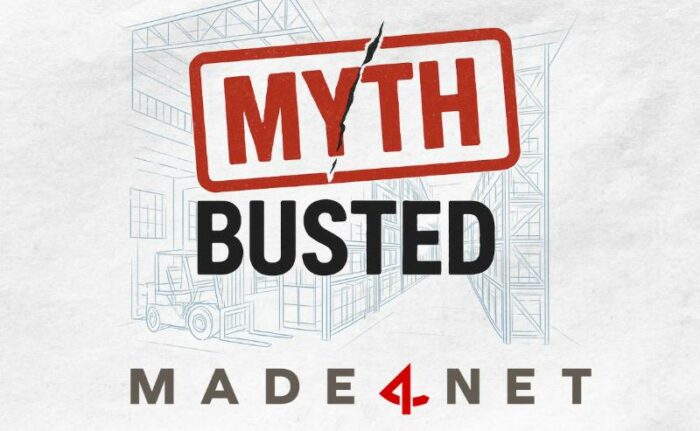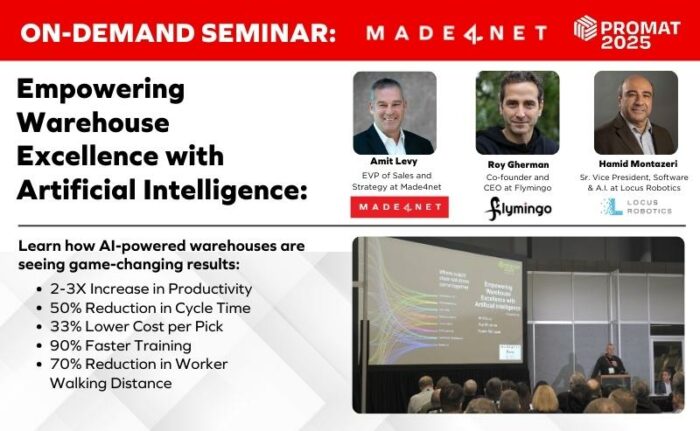
Many companies are facing the challenges of peak season labor shortages. Could robots be the solution? Check out our guest blog from our partner Locus Robotics “Warehouses Overcome Peak Season Labor Challenges with Robots. You Can, Too!”
Now is the time to plan for your busiest season
This Peak season, as unemployment numbers fall and consumers regain financial confidence, e-commerce is expected to exceed the level of volumes that exacerbated the supply chain during the previous Peak season when a pandemic shook the global economy.
Warehouses are already experiencing painful labor challenges including high turnover and shortages that affect volume throughput. Labor reports are expecting these challenges to continue throughout the upcoming Peak season and stunt productivity at warehouses across the country.
Forward-thinking 3PLs and retailers have been making moves this past year to digitize their operations and prepare for possibly their best Peak season yet. If you feel left behind, don’t fret: there’s always next year, but you have to start now by getting in touch with possible solution providers.
How exactly does a robot automation solution increase fulfillment during Peak volume spikes?
Traditional picking involves workers pulling carts around a fulfillment site between pick locations. A multi-bot solution like Locus separates the cart from the worker by assigning workers to a zone while robots complete the travel between pick locations. This allows each to complete tasks independently and for a greater ratio of robots to workers, the key to maximizing productivity.
For example, a fulfillment site employs 5 workers that manually travel between pick locations with a cart. When a surge of orders occurs, management can hire 5 more workers. They’re taught how to operate an RF device, codes to memorize for different situations, contingency plans, and the numbering scheme of aisles. Now the operation has 10 workers with 10 carts; that’s 20 agents doing the work of 10 as the workers and carts are essentially tied together.
Alternatively, management can choose to maintain labor with 5 workers and meet the surging demand by renting 15 robots that operate as an extension of the 5 workers. These workers remain in their zones while robots travel between pick locations. Workers approach a robot, complete the pick, and walk over to the next robot to complete that pick, and so on. Now the operation has 20 agents doing the work of 30+ because workers that don’t spend time walking a few miles each day are able to pick at faster rates.
Essentially, Locus determines the most efficient mix and release of work for robot missions, driving the shortest possible time between tasks for associates. This results in higher task density and faster order cycle times.
What is the average time necessary to plan and deploy a robotics-driven automation solution?
Short of saying “it depends,” every organization has their requirements for making the decision to automate. From our experience at Locus, though, it doesn’t have to be an arduous process. Locus has incredible operation design engineers that create a business case for the integration, implementation, and deployment of a multi-bot solution at a facility. Teams are encouraged to approach us earlier rather than later to start these conversations.
Once the contract is signed, deployment takes an average 4-8-week deployment depending on certain factors. evo, an e-commerce retailer, signed a contract with us to bring the Locus solution into their fulfillment facility and were up-and-running in just 53 days. The best way to get the process started is to reach out as soon as possible so we can help create the business case that brings the automation plan across the finish line.
How do Retailers and 3PLs start the process towards automation?
When labor challenges like hiring and turnover make it challenging to fulfill orders on time, and traditional cart picking methods are becoming too tedious to train new associates on (and demand is picking up), productivity is about to tank. Many facilities have experienced this a few times to realize it’s time to upgrade or risk losing more than revenues.
Many companies develop their automation plans internally with a team of in-house experts. Some bring in a consultant to help (for example, WMS partners like Manhattan and Blue Yonder offer consulting services to help their partners find the right fit for their operations). Others will go directly to automation providers and solicit their help in developing a business case with strong numbers and ROI projections.
While many teams take time internally to review, revise, and decide, there are also many teams who are acutely aware of their needs and are ready to move forward swiftly. The best way to ensure forward motion is to reach out to automation solution providers such as Locus early, help them understand your facility and needs, and ask about their experiences deploying solutions in operations similar to yours.
Download the Infographics: https://bit.ly/3koUWoj
Author: Locus Robotics


